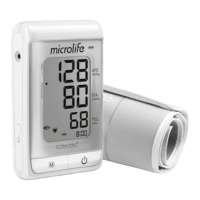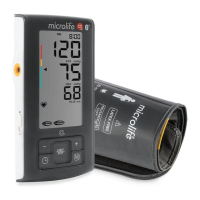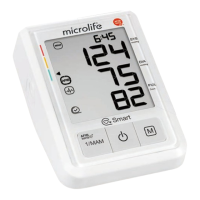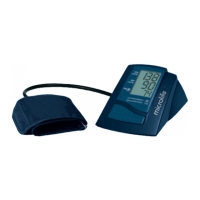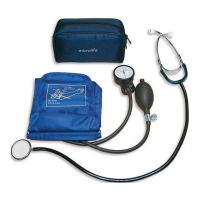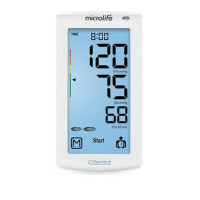2
Table of Contents
1. Important Facts about Blood Pressure and Self-Measure-
ment
• How do I evaluate my blood pressure?
2. Important Facts about Atrial Fibrillation (AFIB)
• What is Atrial Fibrillation (AFIB)?
• How does AFIB impact my family or me?
• Microlife AFIB detection provides a convenient way to
screen for AFIB (only in AFIB/MAM mode)
• Risk factors you can control
3. Using the Device for the First Time
• Inserting the batteries
• Selecting the correct cuff
• Select the measuring mode: standard or AFIB/MAM mode
• AFIB/MAM mode (highly recommended)
4. Taking a Blood Pressure Measurement using this Device
5. Appearance of the Atrial Fibrillation Indicator for early
Detection (only in AFIB/MAM mode)
6. Traffic Light Indicator in the Display
7. Data Memory
8. Battery Indicator and Battery change
• Low battery
• Flat battery – replacement
• Which batteries and which procedure?
• Using rechargeable batteries
9. Using a Mains Adapter
10. Error Messages
11. Safety, Care, Accuracy Test and Disposal
• Safety and protection
• Device care
• Cleaning the cuff
• Accuracy test
• Disposal
12. Guarantee
13. Technical Specifications
Guarantee Card (see Back Cover)
1. Important Facts about Blood Pressure and Self-
Measurement
• Blood pressure is the pressure of the blood flowing in the
arteries generated by the pumping of the heart. Two values, the
systolic (upper) value and the diastolic (lower) value, are
always measured.
• The device indicates the pulse rate (the number of times the
heart beats in a minute).
• Permanently high blood pressure values can damage your
health and must be treated by your doctor!
• Always discuss your values with your doctor and tell him/her if
you have noticed anything unusual or feel unsure. Never rely
on single blood pressure readings.
• There are several causes of excessively high blood pressure
values. Your doctor will explain them in more detail and offer
treatment where appropriate. Besides medication, weight loss
and exercise can also lower your blood pressure.
• Under no circumstances should you alter the dosages of
any drugs prescribed by your doctor!
• Depending on physical exertion and condition, blood pressure
is subject to wide fluctuations as the day progresses. You
should therefore take your measurements in the same
quiet conditions and when you feel relaxed! Take at least
two readings every time (in the morning and in the evening) and
average the measurements.
• It is quite normal for two measurements taken in quick succes-
sion to produce significantly different results. Therefore we
recommend using the MAM technology.
• Deviations between measurements taken by your doctor or in
the pharmacy and those taken at home are quite normal, as
these situations are completely different.
•
Several measurements
provide much more reliable information
about your blood pressure than just one single measurement.
Therefore we recommend using the MAM technology.
• Leave a small break of at least 15 seconds between two
measurements.
• If you suffer from an irregular heartbeat, measurements taken
with this device should be evaluated with your doctor.
• The pulse display is not suitable for checking the
frequency of heart pacemakers!
• If you are pregnant, you should monitor your blood pressure
very closely as it can change drastically during this time!

